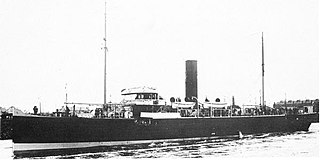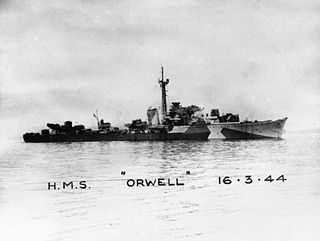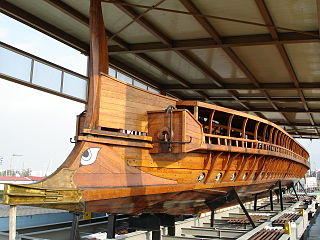Contents
- Actions
- American Civil War
- First Balkan War
- World War I
- World War II
- Post-World War II
- See also
- References
This article has no lead section .(May 2022) |
This article has no lead section .(May 2022) |





U-boats were naval submarines operated by Germany, particularly in the First and Second World Wars. Although at times they were efficient fleet weapons against enemy naval warships, they were most effectively used in an economic-warfare role and enforcing a naval blockade against enemy shipping. The primary targets of the U-boat campaigns in both wars were the merchant convoys bringing supplies from Canada and other parts of the British Empire, and from the United States, to the United Kingdom and to the Soviet Union and the Allied territories in the Mediterranean. German submarines also targeted Brazilian merchant ships during both World Wars and, twice over, precipitated Brazil's decision to give up its neutral stance and declare war on Germany.

German submarine U-552 was a Type VIIC U-boat built for Nazi Germany's Kriegsmarine for service during World War II. She was laid down on 1 December 1939 at Blohm & Voss in Hamburg as yard number 528, launched on 14 September 1940, and went into service on 4 December 1940. U-552 was nicknamed the Roter Teufel after her mascot of a grinning devil, which was painted on the conning tower. She was one of the more successful of her class, operating for over three years of continual service and sinking or damaging 35 Allied ships with 164,276 GRT and 1,190 tons sunk and 26,910 GRT damaged. She was a member of 21 wolf packs.

Q-ships, also known as Q-boats, decoy vessels, special service ships, or mystery ships, were heavily armed merchant ships with concealed weaponry, designed to lure submarines into making surface attacks. This gave Q-ships the chance to open fire and sink them. The use of Q-ships contributed to the abandonment of cruiser rules restricting attacks on unarmed merchant ships and to the shift to unrestricted submarine warfare in the 20th century.

USS Sawfish (SS-276), a Gato-class submarine, was a ship of the United States Navy named for the sawfish, a viviparous ray which has a long flat snout with a row of toothlike structures along each edge. It is found principally in the mouths of tropical American and African rivers.

This is a timeline for the Battle of the Atlantic (1939–1945) in World War II.
German submarine U-333 was a Type VIIC U-boat of Nazi Germany's Kriegsmarine during World War II. The submarine was laid down on 11 March 1940 at the Nordseewerke yard at Emden, launched on 14 June 1941, and commissioned on 25 August 1941 under the command of Kapitänleutnant Peter-Erich Cremer. After training with the 5th U-boat Flotilla at Kiel, on 1 January 1942 U-333 was transferred to the 3rd U-boat Flotilla based at La Pallice for front-line service.
The history of the submarine spans the entire history of human endeavour as mankind has since early civilisation sought to explore and travel under the sea. Humanity has employed a variety of methods to travel underwater for exploration, recreation, research and significantly warfare. While early attempts, such as those by Alexander the Great, were rudimentary, the advent of new propulsion systems, fuels, and sonar, propelled an increase in submarine technology. The introduction of the diesel engine, then the nuclear submarine, saw great expansion in submarine use - and specifically military use - during World War I, World War II, and the Cold War. The Second World War use of the U-Boat by the German Navy against the Royal Navy and commercial shipping, and the Cold War's use of submarines by the United States and Russia, helped solidify the submarine's place in popular culture. The latter conflicts also saw an increasing role for the military submarine as a tool of subterfuge, hidden warfare, and nuclear deterrent. The military use of submarines continues to this day, predominantly by North Korea, China, the United States and Russia.
German submarine U-405 was a Type VIIC U-boat of Nazi Germany's Kriegsmarine during World War II.

German submarine U-124 was a Type IXB U-boat of Nazi Germany's Kriegsmarine during World War II. She operated in the Atlantic as part of the 2nd U-boat flotilla, both west of Scotland and east of the eastern US coast. She was also present off northern South America.

German submarine U-201 was a Type VIIC U-boat of the Kriegsmarine in World War II.

HMS Orwell was an O-class destroyer of the Royal Navy that entered service in 1942 and was broken up in 1965.

A ram was a weapon fitted to varied types of ships, dating back to antiquity. The weapon comprised an underwater prolongation of the bow of the ship to form an armoured beak, usually between 2 and 4 meters (6–12 ft) in length. This would be driven into the hull of an enemy ship to puncture, sink or disable it.
During the Battle of the Atlantic, British merchant shipping was formed into convoys for protection against German submarine attack. In March 1943 convoys HX 229 and SC 122 were the focus of the largest convoy battle of the war. Kriegsmarine tactics against convoys employed multiple-submarine wolfpack tactics in nearly simultaneous surface attacks at night. Patrolling aircraft restricted the ability of submarines to converge on convoys during daylight. The North Atlantic winters offered the longest periods of darkness to conceal surfaced submarine operations. The winter of 1942–43 saw the largest number of submarines deployed to the mid-Atlantic before comprehensive anti-submarine aircraft patrols could be extended into that area.
German submarine U-402 was a Type VIIC U-boat built for Nazi Germany's Kriegsmarine for service during World War II.

The Atlantic U-boat campaign of World War I was the prolonged naval conflict between German submarines and the Allied navies in Atlantic waters—the seas around the British Isles, the North Sea and the coast of France.
German submarine U-568 was a Type VIIC U-boat built for Nazi Germany's Kriegsmarine for service during World War II. She conducted five patrols, sinking one merchant ship, two warships, and severely damaging another warship. On 28 May 1942, she was depth charged and sunk in the Mediterranean Sea; all hands survived.
HMS Goodall (K479) was a British Captain-class frigate of the Royal Navy in commission during World War II. Originally constructed as the United States Navy Evarts-class destroyer escort USS Reybold (DE-275), she served in the Royal Navy from 1943 until her sinking in 1945.
HMS Gould (K476) was a British Captain-class frigate of the Royal Navy in commission during World War II. Originally constructed as the United States Navy Evarts-class destroyer escort USS Lovering (DE-272), she served in the Royal Navy from 1943 until her sinking in 1944.
Hell Below is a TV series on The Smithsonian Channel produced by Parallax Film Productions Inc. The series is narrated by Canadian voice-over artist Mark Oliver, charting the stealth game of subsea warfare and the narrative from contact to attack of the greatest submarine patrols of World War II. Six initial episodes cover the rise of the Wolfpack to the drive for victory in the Pacific. Expert analysis and stock footage are woven with re-enactments filmed on authentic Second World War era submarines.
World War II was the first war where naval aviation took a major part in the hostilities. Aircraft carriers were used from the start of the war in Europe looking for German merchant raiders and escorting convoys. Offensive operations began with the Norwegian campaign where British carriers supported the fighting on land.